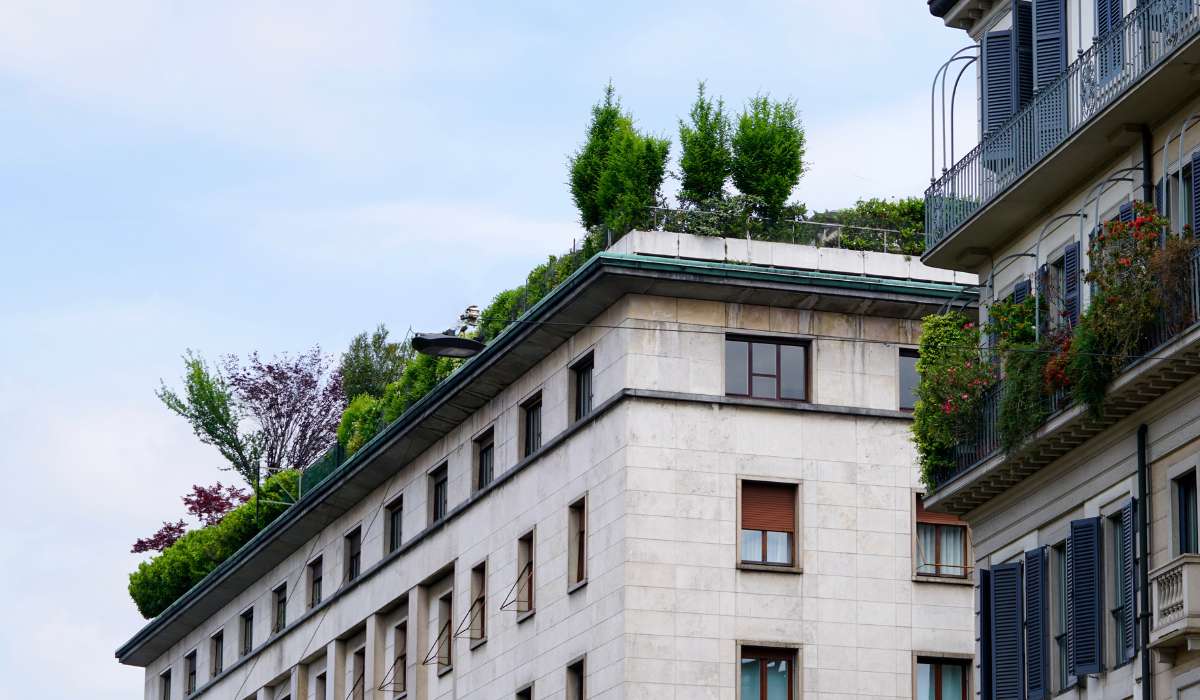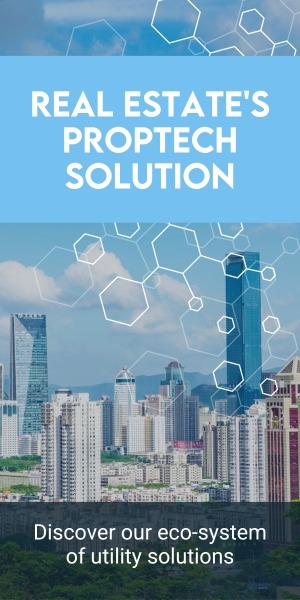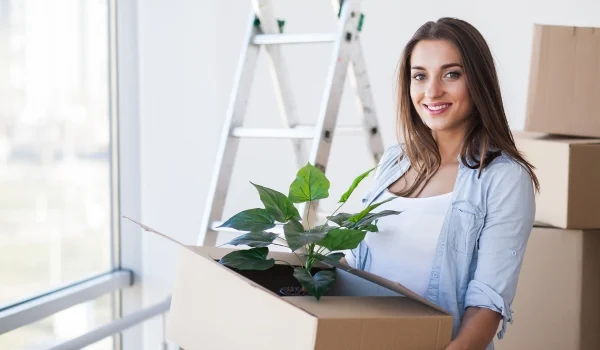In a world that increasingly demands sustainable practices, property managers stand at the crossroads of expectation and innovation. This article marks the beginning of a series unraveling the layered benefits of retrofits, starting with the multifaceted advantages of green roofs and green walls. We’re not just talking about a green thumb for a pat on the back; we’re examining a strategic investment that yields dividends in occupant well-being, financial returns, and environmental stewardship.
As the corporate landscape transforms, the clamor for eco-friendly workspaces intensifies. JLL’s extensive research, spanning 127 office markets across 112 cities, has found that an impressive 84% of premium office buildings have secured an environmental sustainability certification, signifying a resolute march toward greener horizons.
Today, we anchor our discussion in the verdant possibilities of green roofs and green walls—innovative solutions that marry form with function, offering a breath of fresh air to building occupants, lining the pockets with long-term savings, and bestowing upon our cities the gentle touch of nature’s own hand.
Let’s answer the pivotal question: why should we invest in green infrastructure?
The Unsung Heroes of Urban Drainage: The Power of Green Roofs
Imagine our cities as concrete jungles turning over a new leaf, where green roofs play a pivotal role in stormwater management. According to Green Roofs for Healthy Cities, these canopies absorb 70-90% of precipitation, a significant contribution in our fight against urban flooding and antiquated sewer systems plagued by combined sewer overflows (CSOs). This green intervention is more than an environmental remedy; it’s a financial safeguard for our cities’ futures.
According to the EPA, stormwater runoff is laden with chemicals and waste, storming our natural waterways and threatening public health. The narrative is grim: people swimming near storm drains face a 50% higher risk of illness. Green roofs and walls stand as sentinels, guarding our cities by diverting rainwater from our overburdened sewers, crafting a narrative of resilience and health for urban dwellers.
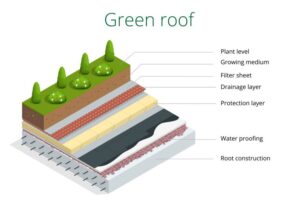
Image from Property Manager Insider
Cultivating Well-Being: The Natural Benefits of Living Architecture
Stepping into a building adorned with green walls is like a whisper of the forest in the heart of the city. Research, including that by Piers MacNaughton et al., draws a clear line between such living environments and a bounty of wellness benefits, from sharper cognitive function to deeper sleep—a testament to the power of nature-infused spaces.
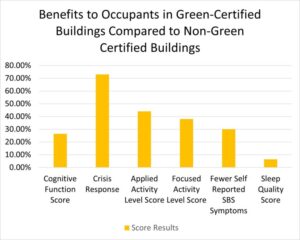
Graph created using results from Piers MacNaughton et al.’s study
The Sound of Silence: How Green Walls Quiet the Urban Buzz
Envision the constant drone of the city fading behind a lush green tapestry of foliage. Research by Azkorra et al. demonstrates that green walls serve as natural sound barriers, diminishing noise pollution by a remarkable 15 decibels—akin to dialing down the volume from a standard conversation (60 dB) to a gentle whisper (15 dB).
But the virtues of green walls stretch even further, touching on the subtle yet impactful aspects of cognitive well-being. These living installations offer a reprieve from the cacophony of urban life and are linked to notable improvements in cognitive function, acting as a balm for the symptoms of Sick Building Syndrome (SBS)—a condition often marked by ailments associated with time spent in certain buildings with poor air quality.
Here, concentration and productivity find fertile ground.
The Financial Bloom: Green Upgrades as a Smart Investment
Everyone knows roofs are expensive. Now, you’re likely nervously ticking back the years since your own was replaced. But green roofs are actually a source of hidden margin in your budget. So it’s not just about aesthetics or environmental stewardship—green roofs and walls make economic sense.
Katia Perini and Paolo Rosasco’s research indicates a property value surge of 3.9% with these installations. The EPA underscores a compelling financial narrative with a payback period of six years and a 224% return on investment, thanks to lifespan extension, stormwater management, and energy savings.
Consider the energy-saving saga of green roofs, where the EPA cites a temperature differential of 30–40°F compared to conventional roofs. This natural insulation translates to a reduced strain on HVAC systems and tangible savings—about $0.23 per square foot annually. Imagine the cumulative effect over sprawling corporate rooftops—a narrative of significant savings and sustainability.
For example’s sake, a 1,700 square foot roof would incur $400 in savings, and financial benefits only increase as the size of the roof increases.
A Green Showcase: McDonald’s Headquarters in Chicago
McDonald’s Headquarters in Chicago stands as a beacon of green innovation with advanced green roofs that won them the 2020 Green Roof and Wall Awards of Excellence. The building also boasts additional green roofs and terraces on the 6th and 8th floors, a large lush interior living wall, and many interior plantings.
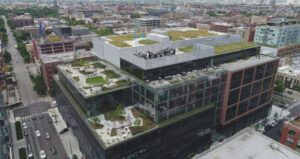
Image from Green Roofs for Healthy Cities
This corporate giant’s commitment reflects a broader movement where businesses embrace living architecture for its manifold benefits–from financial acumen to enhanced occupant wellness and eco-friendly branding.
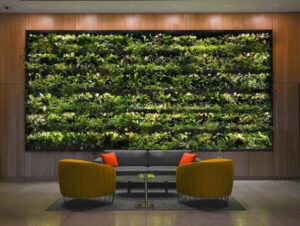
Image from Green Roofs for Healthy Cities
A Breath of Fresh Air: Greenery Roofs and Green Walls Are Worth the Investment
The case for green roofs and walls transcends aesthetics, touching upon financial viability, occupant satisfaction, and infrastructural longevity. These retrofits are more than a trend; they’re a compelling argument for a sustainable, prosperous future in urban development.
For those poised to take the leap into greener corporate landscapes, the experts at Conservice are ready to guide you through the verdant possibilities. Reach out today to explore how a retrofit with green roofs and walls could revolutionize your space.
